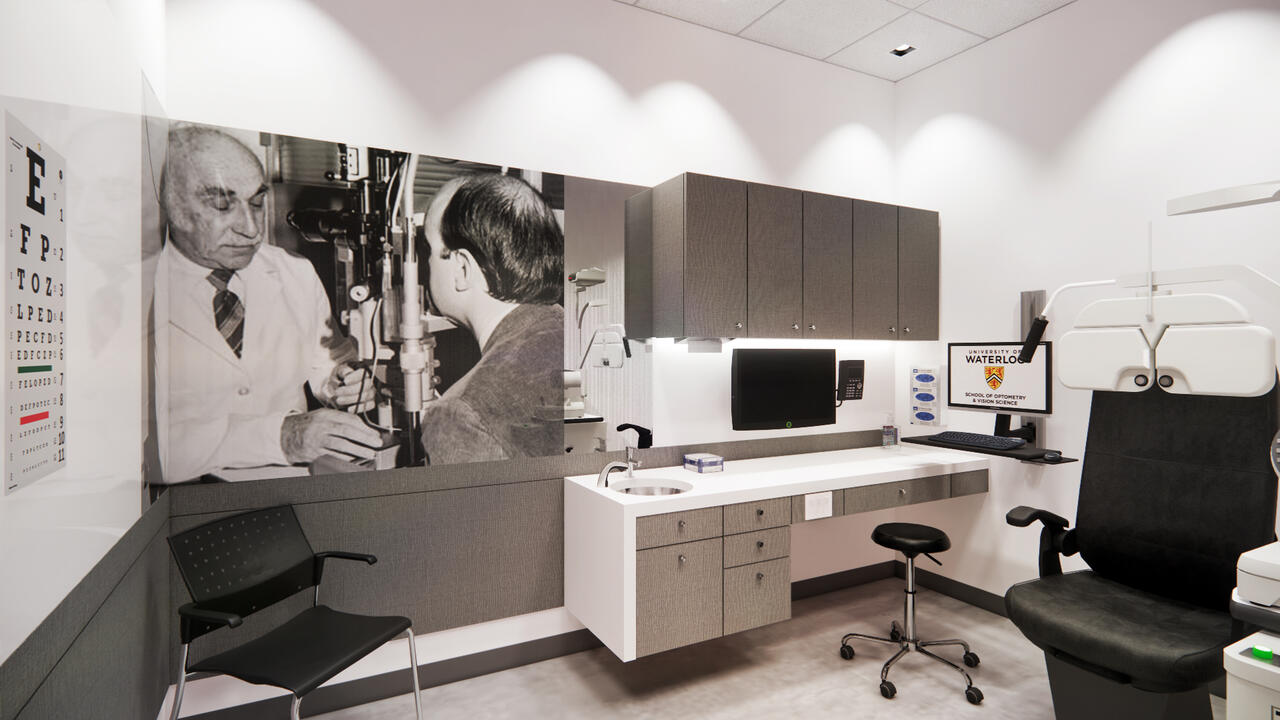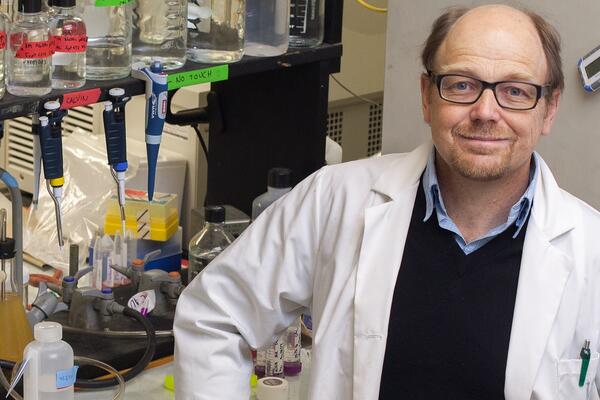
Waterloo Region invests in cutting edge eye and vision care for our community
Waterloo Eye Institute to expand the delivery of essential eye and vision care

Waterloo Eye Institute to expand the delivery of essential eye and vision care
By Media RelationsThe University of Waterloo's School of Optometry and Vision Science is announcing a $1 million partnership with the Region of Waterloo, expanding community members' access to world-class eye and vision care.
Located within the University of Waterloo's School of Optometry and Vision Science, the new Waterloo Eye Institute will expand the delivery of essential eye and vision care, such as comprehensive eye exams, low vision rehabilitation services, dry eye disease treatment and myopia control, in 67,000 square feet of new and renovated space.
Already one of the largest vision care facilities in Canada, the University of Waterloo Optometry Clinic is open to all members of the public and currently averages over 28,000 patient interactions per year. With increased clinical capacity, the Waterloo Eye Institute aims to double the amount of comprehensive and specialized care delivered to patients of all ages and abilities annually - including access to care in areas of growing demand such as vision therapy, ocular disease, and concussion.
"When I'm asked to identify some of the differentiators that make our Region great, I often think of the School of Optometry and Vision Science," says Councillor Michael Harris. "Whether you're young, middle-aged, or a senior, people of all ages receive high-quality care at the University of Waterloo. And as one of the fastest-growing regions in Ontario, access to high-quality eye and vision care has never been more important."
In addition to enhanced access to care, the Waterloo Eye Institute will include the largest vision science research hub in North America, bringing together under one roof the University's expertise in imaging, artificial intelligence, vision science and brain health, to bring new treatments from the lab directly to patients. The Waterloo Eye Institute will also unveil a national tele-optometry centre, bridging critical access to eye and vision care for remote and Indigenous communities across the country.
This partnership with the Region of Waterloo comes as Canadians feel the impact of a growing vision crisis, says Dr. Carol Cressman, a local optometrist and chair of the School's Waterloo Eye Institute community fundraising campaign.
"Poor vision can severely impact a person's quality of life," Cressman said. "It is startling to know that one in five Canadians are already at risk of losing their sight due to eye disease, and that it's expected this figure will double in the next thirty years."
Councillor Sean Strickland agrees. "The need is there to bring a world-class eye and vision care centre to our local community, so people like me, and thousands of others, can get the care they need here at home instead of travelling outside the Region," Strickland said.
Thanks to the community's generosity and University support, Waterloo's School of Optometry and Vision Science has raised $18.1 million of its $35 million Seeing Beyond 2020 fundraising campaign and is on track to see the Waterloo Eye Institute break ground in 2023.
For more information, please visit the Seeing Beyond 2020 website.

Read more
Here are the people and events behind some of this year’s most compelling Waterloo stories

Read more
Discovery of a thick atmosphere on a lava world reshapes our understanding of rocky exoplanets

Dr. Brian Dixon, professor of biology at the University of Waterloo says there is a link between cold weather and getting sick. (University of Waterloo)
Read more
Waterloo researcher shares why we get sick when the mercury dips
The University of Waterloo acknowledges that much of our work takes place on the traditional territory of the Neutral, Anishinaabeg, and Haudenosaunee peoples. Our main campus is situated on the Haldimand Tract, the land granted to the Six Nations that includes six miles on each side of the Grand River. Our active work toward reconciliation takes place across our campuses through research, learning, teaching, and community building, and is co-ordinated within the Office of Indigenous Relations.